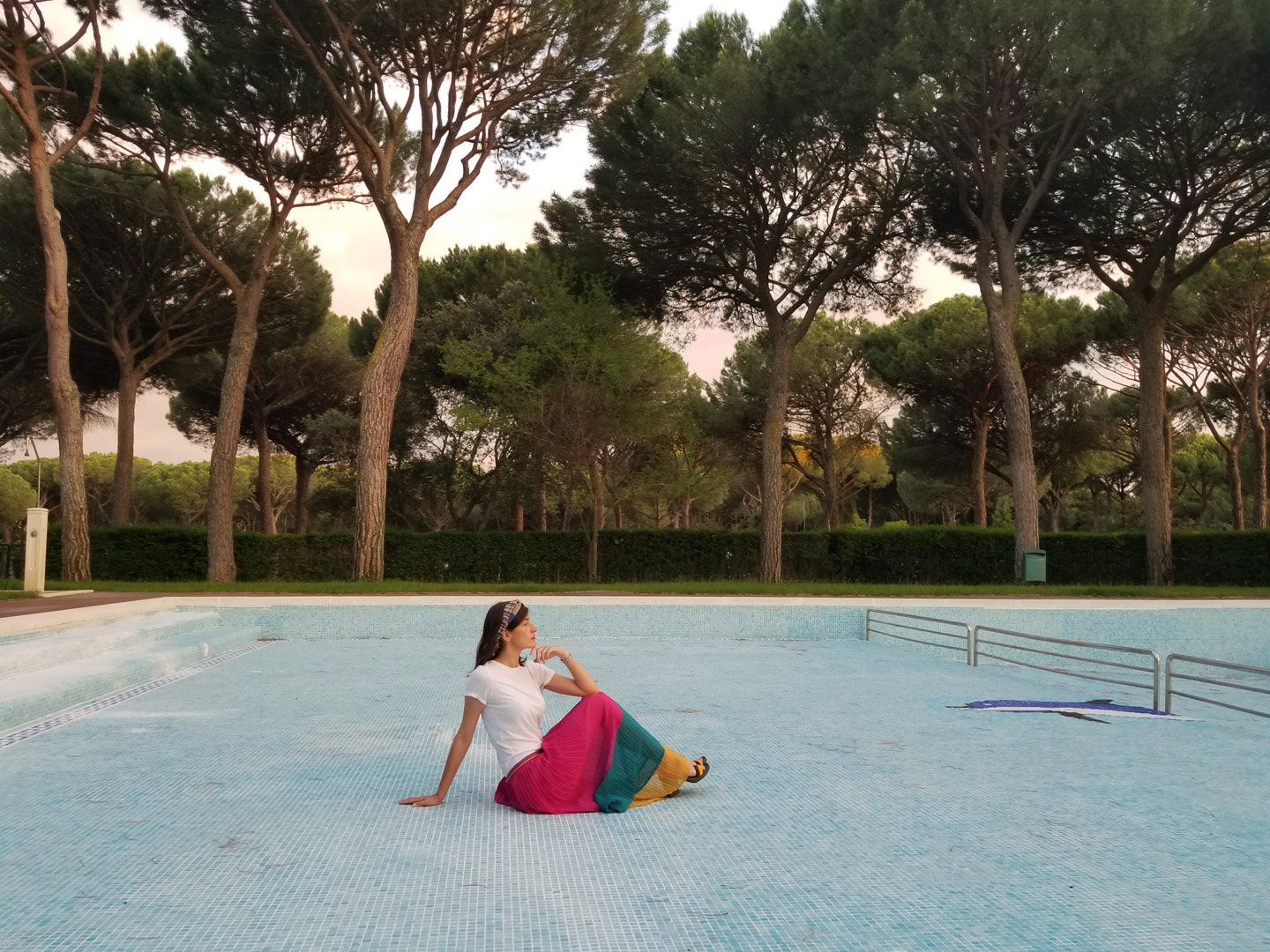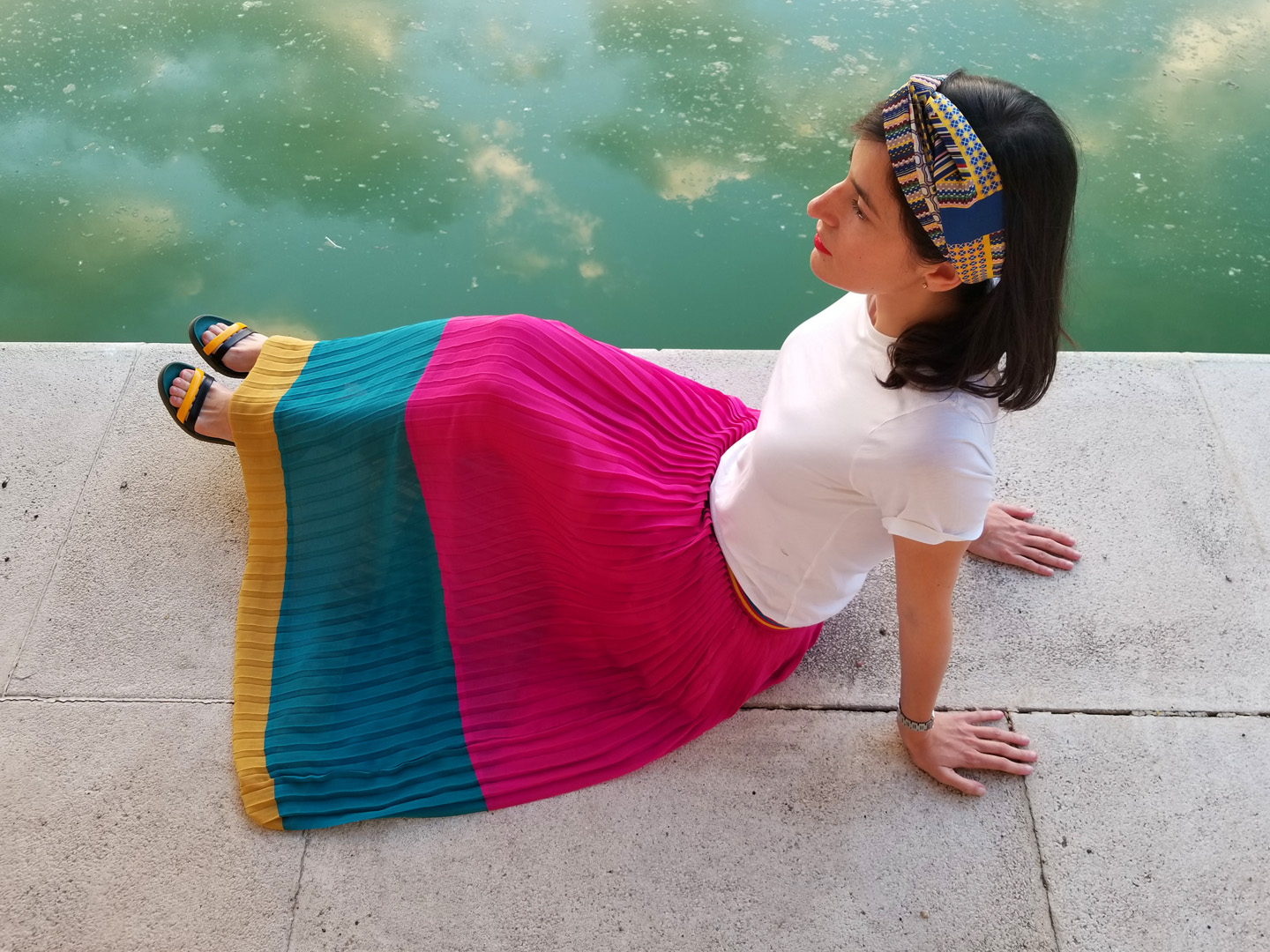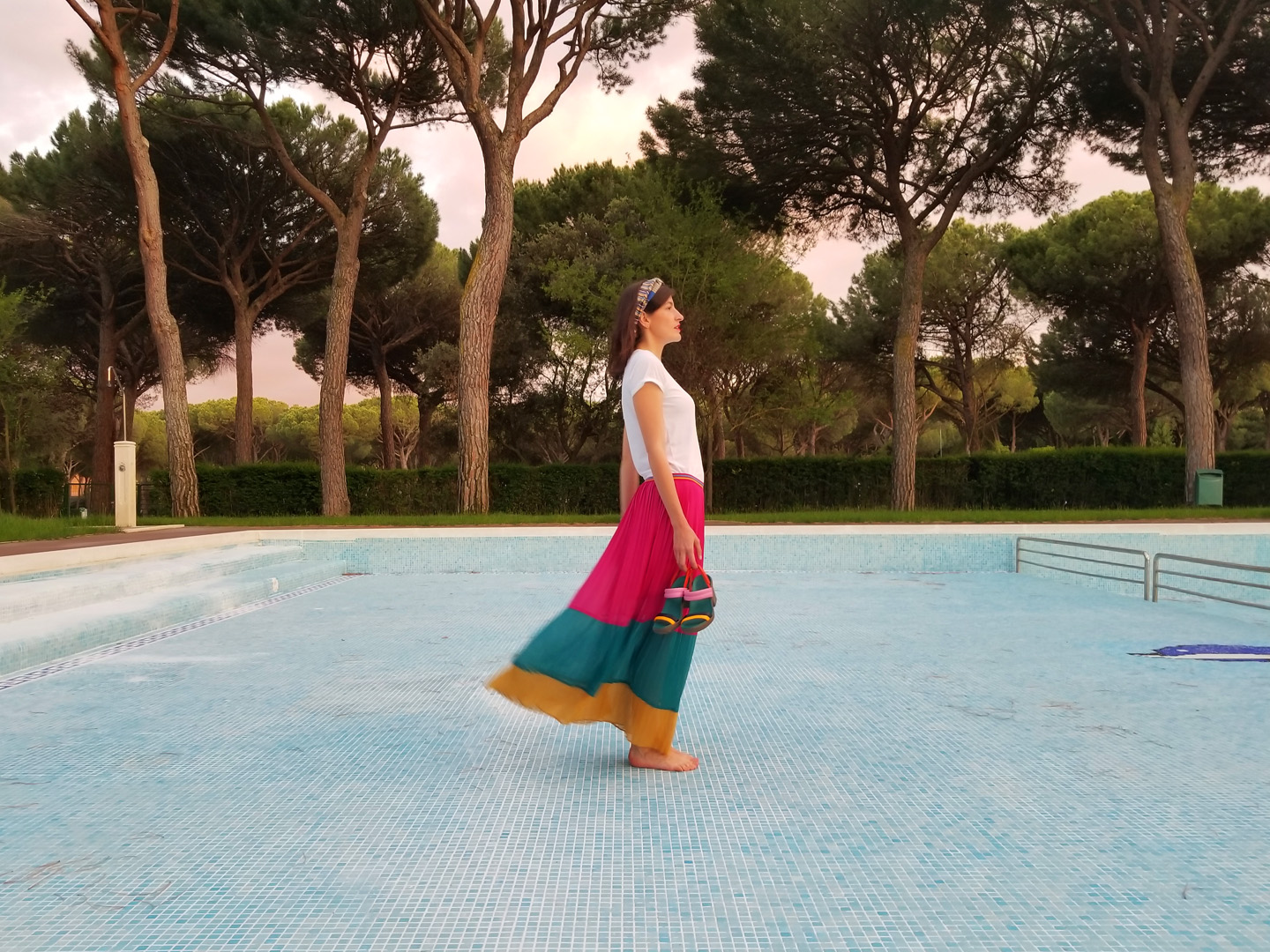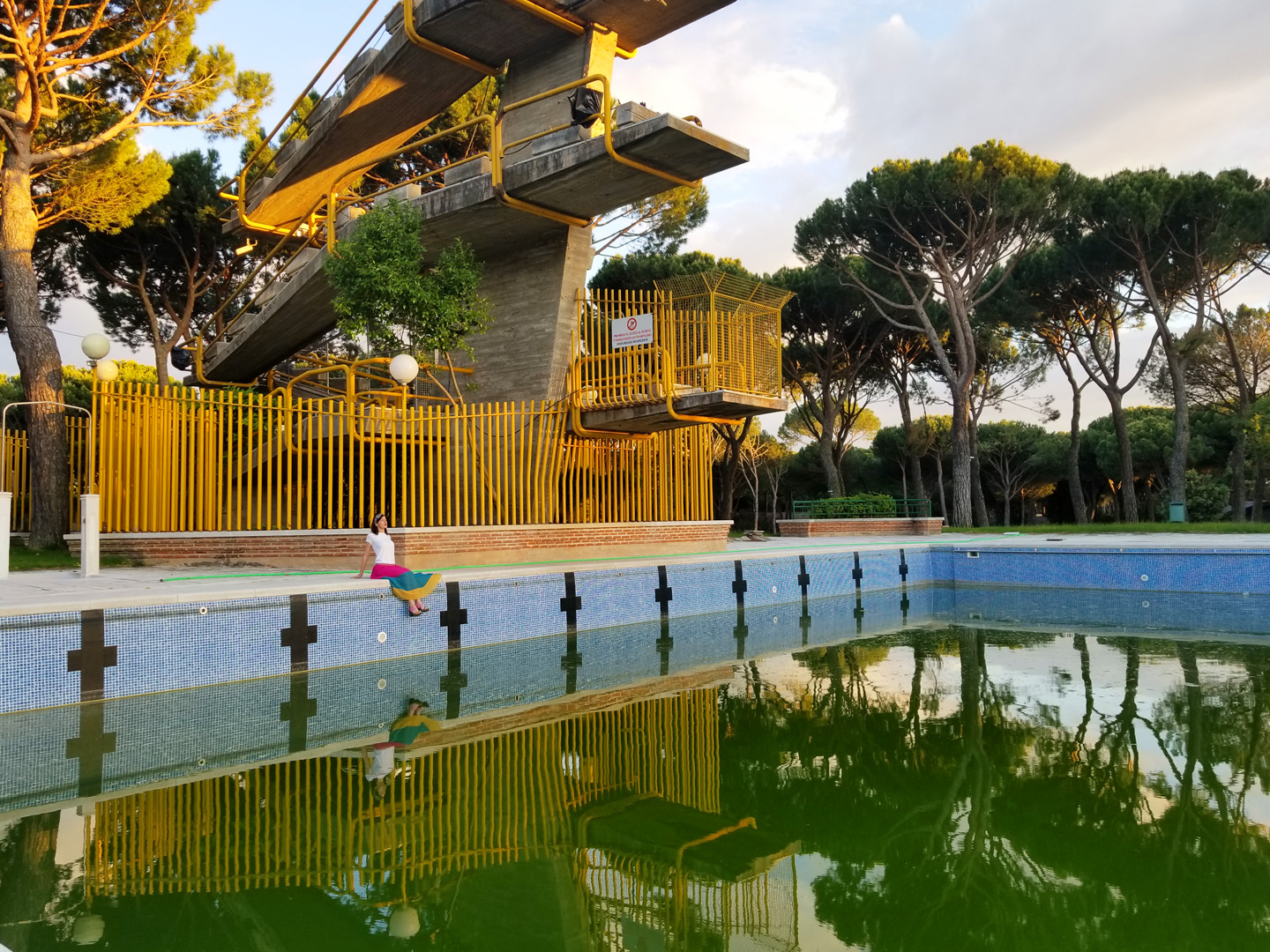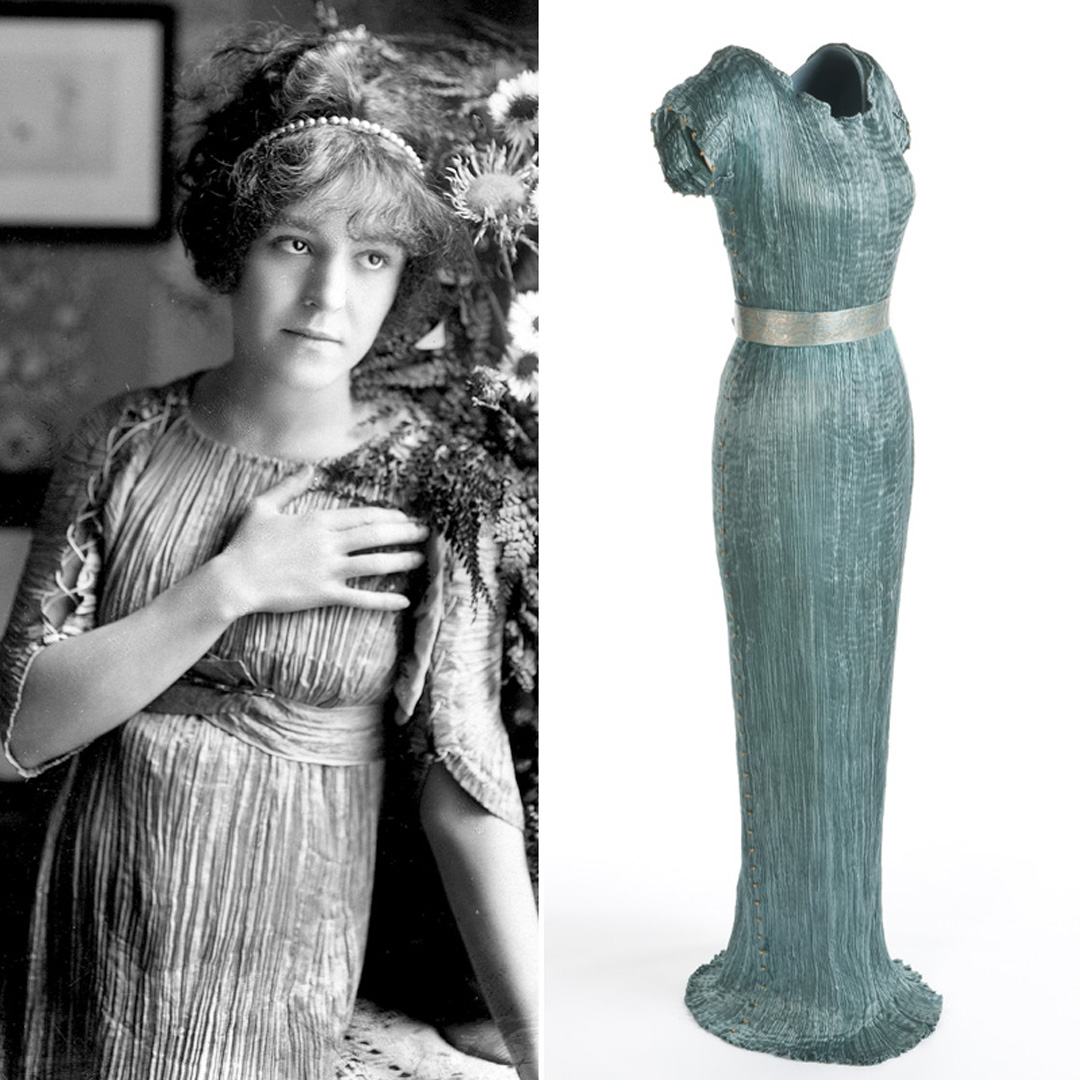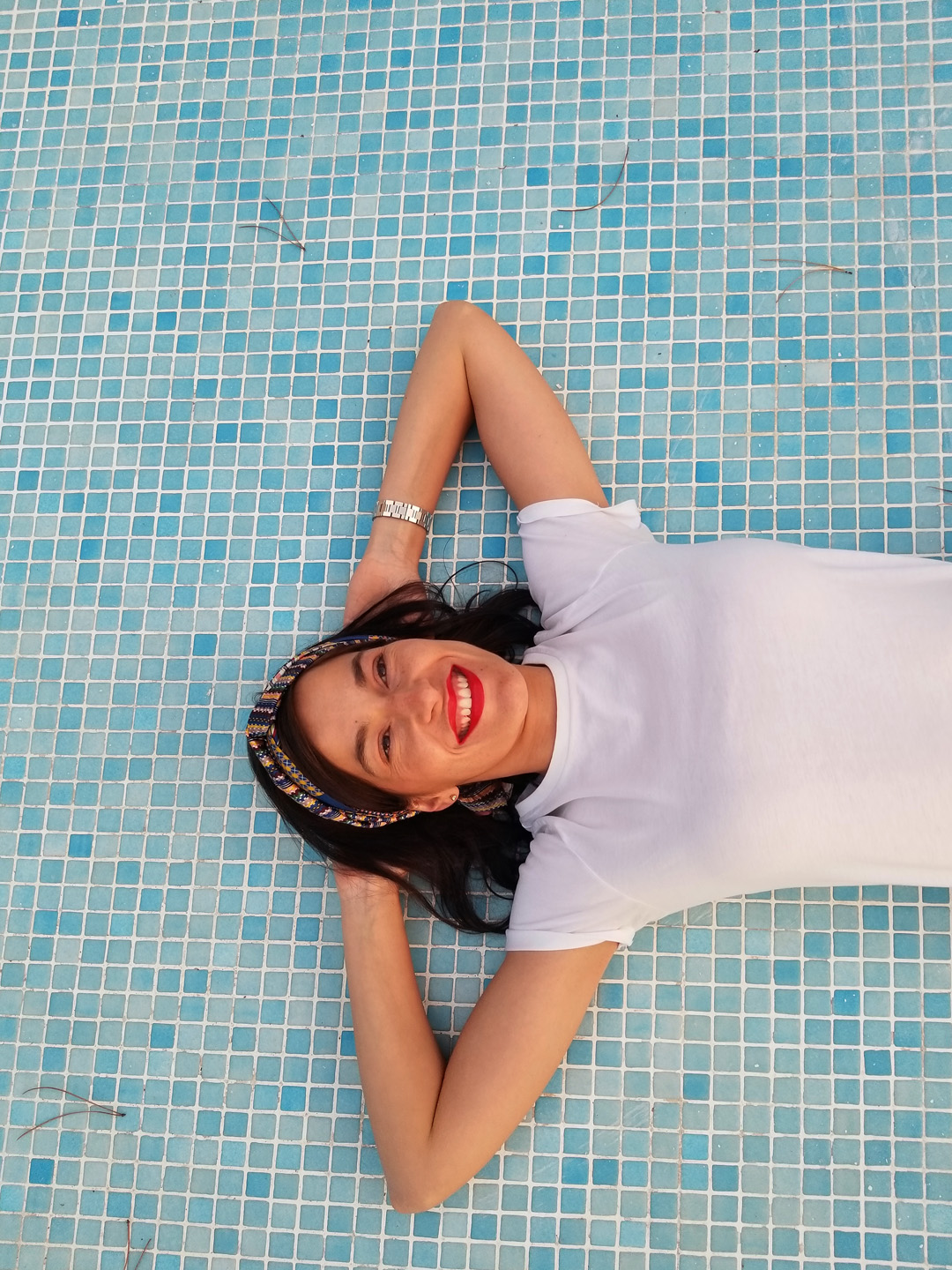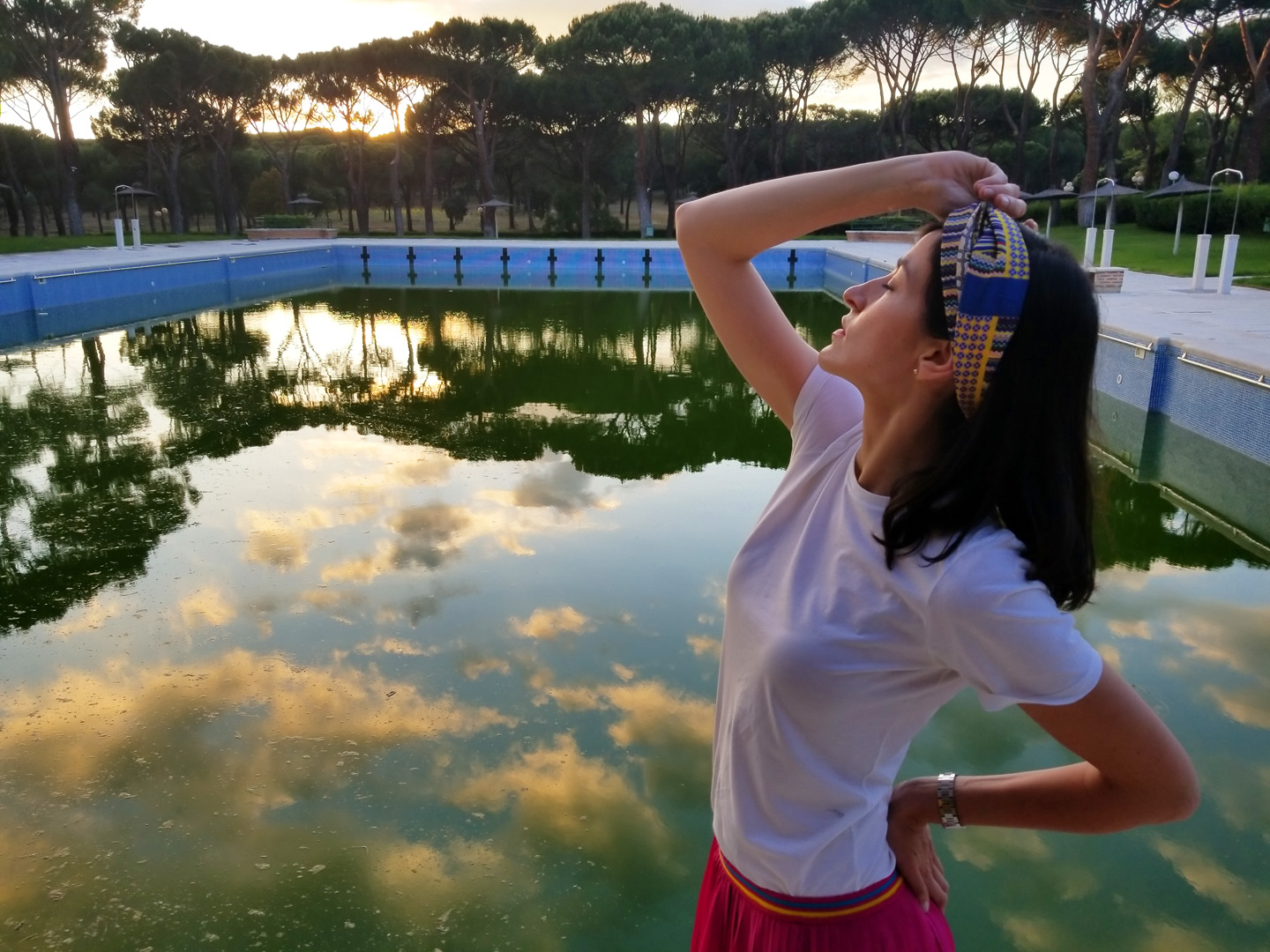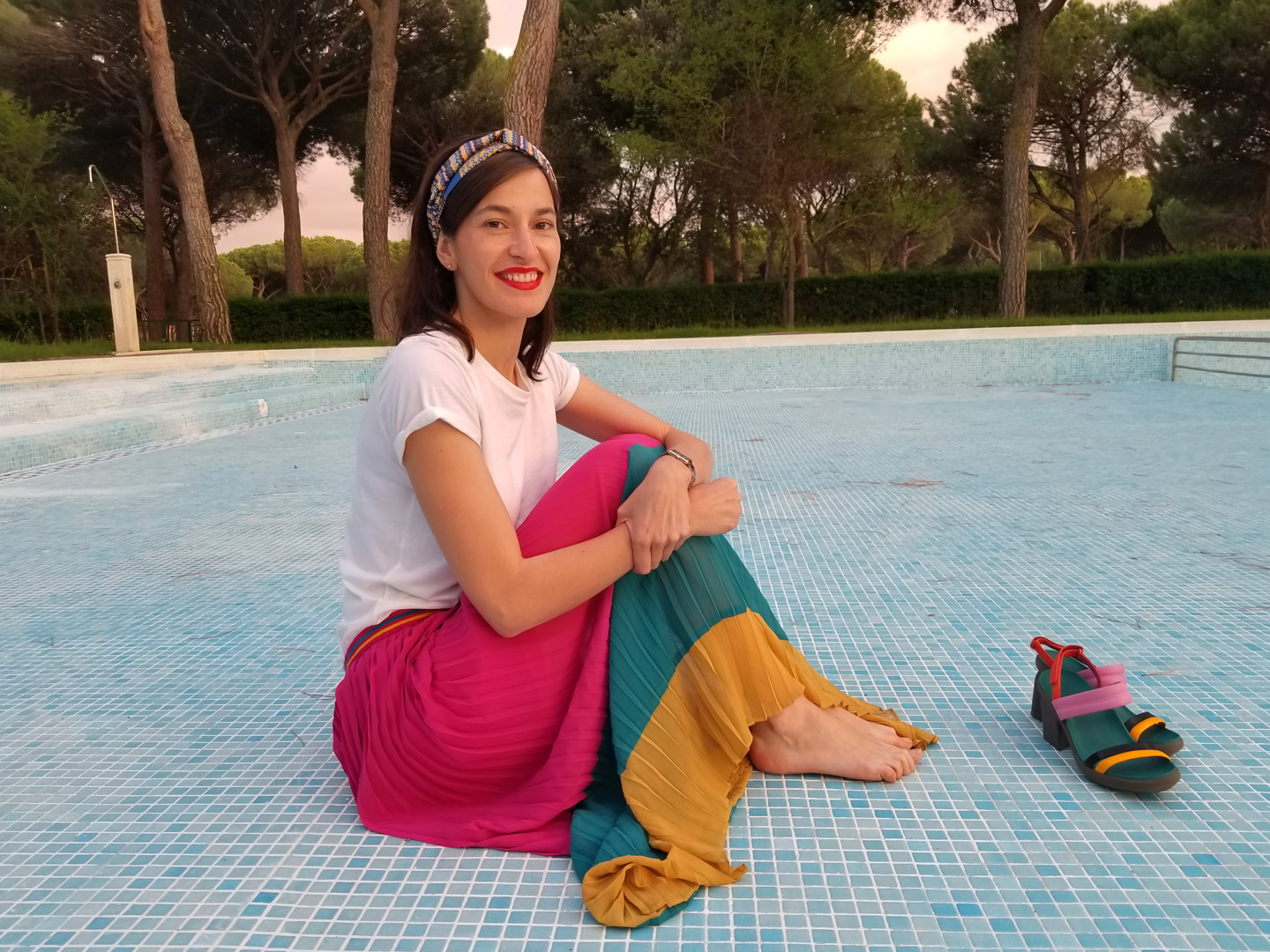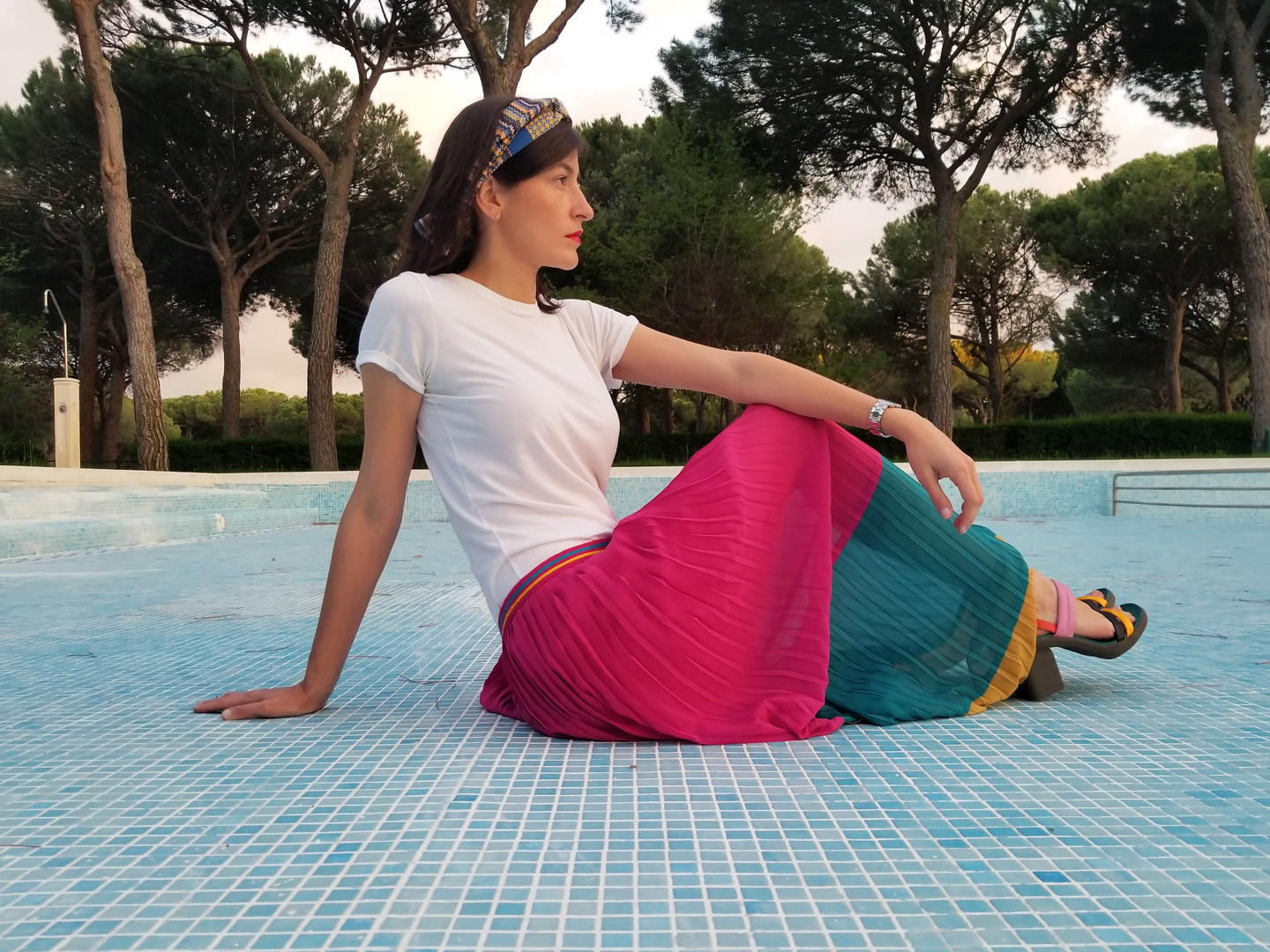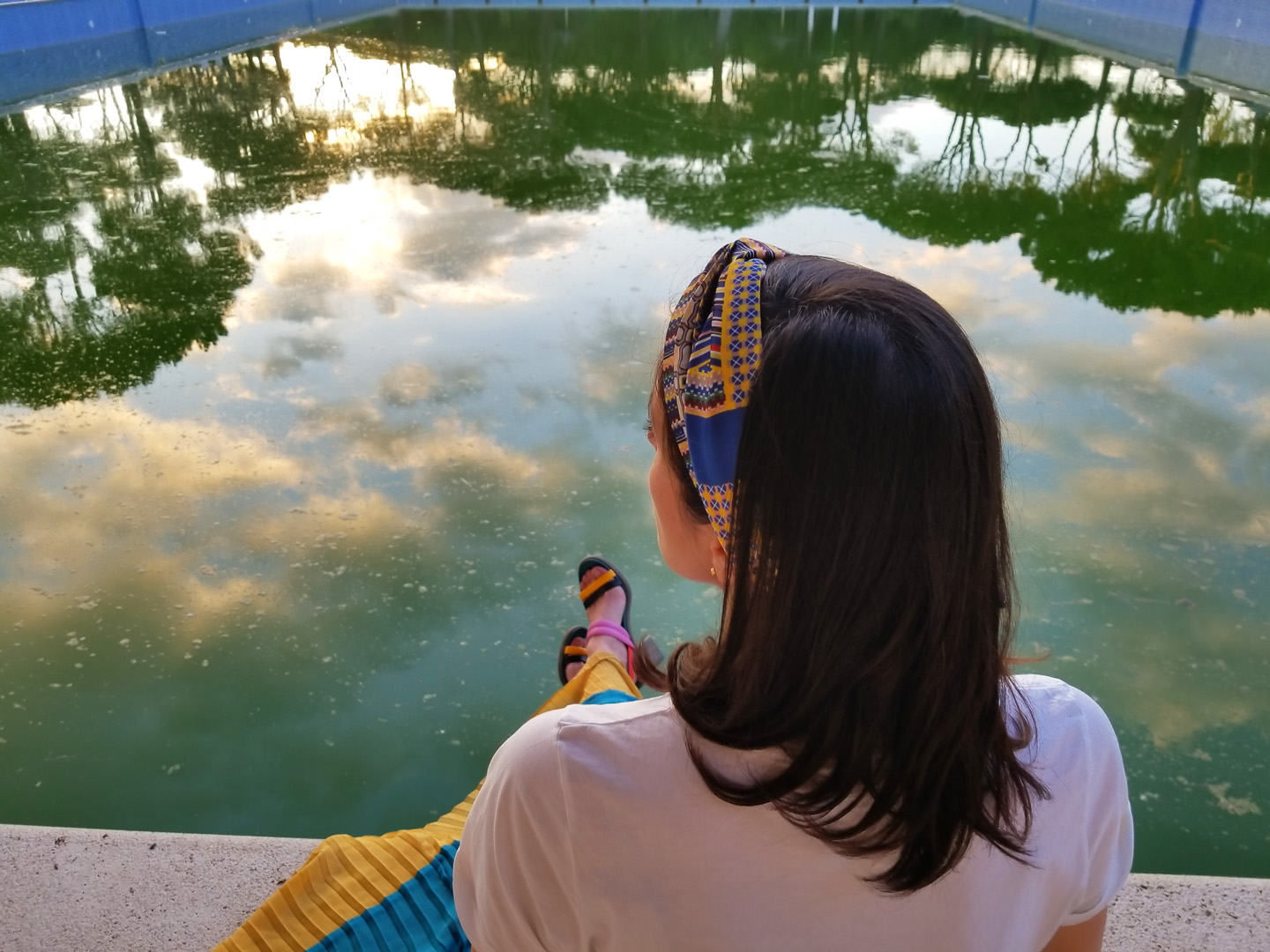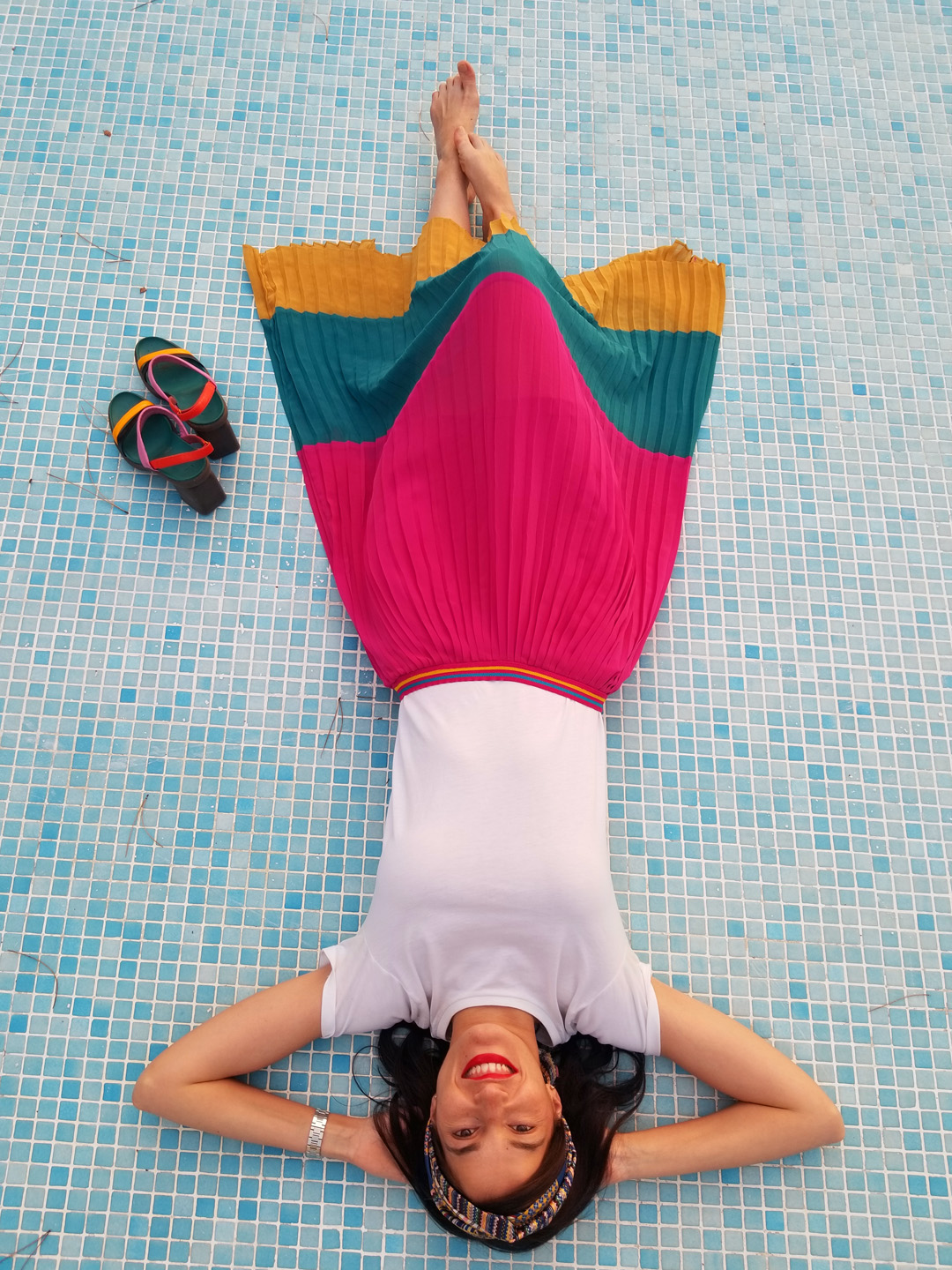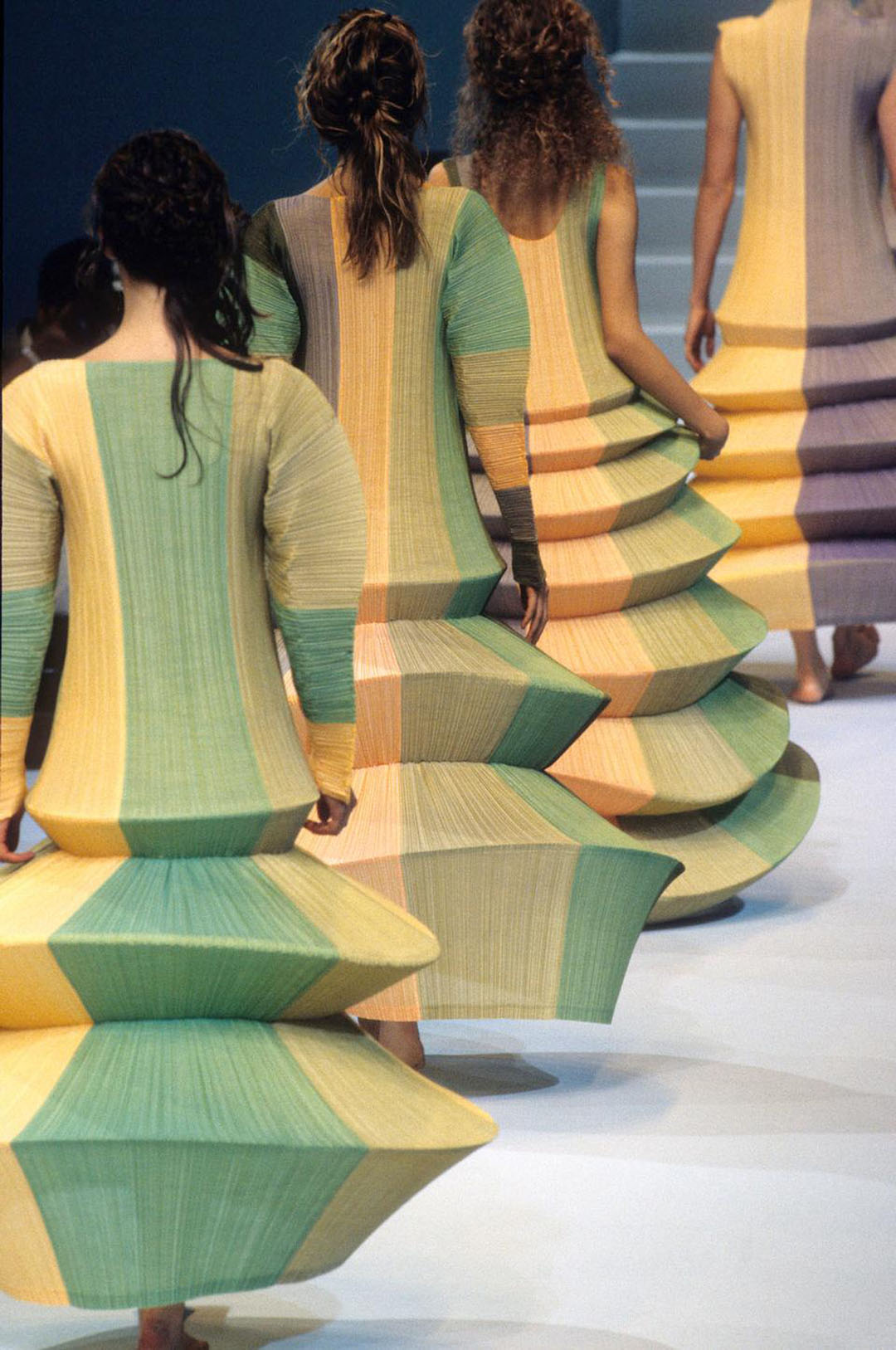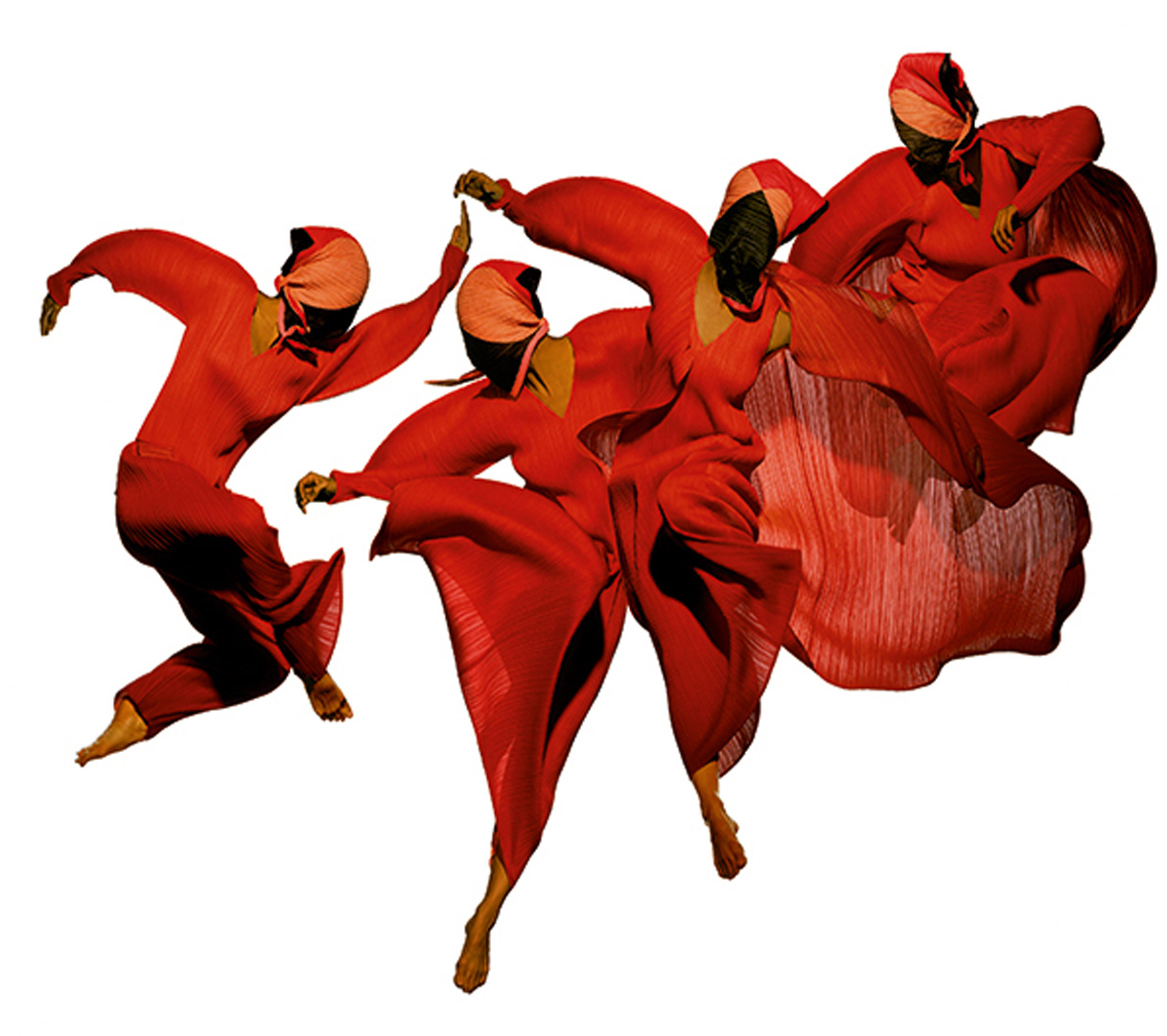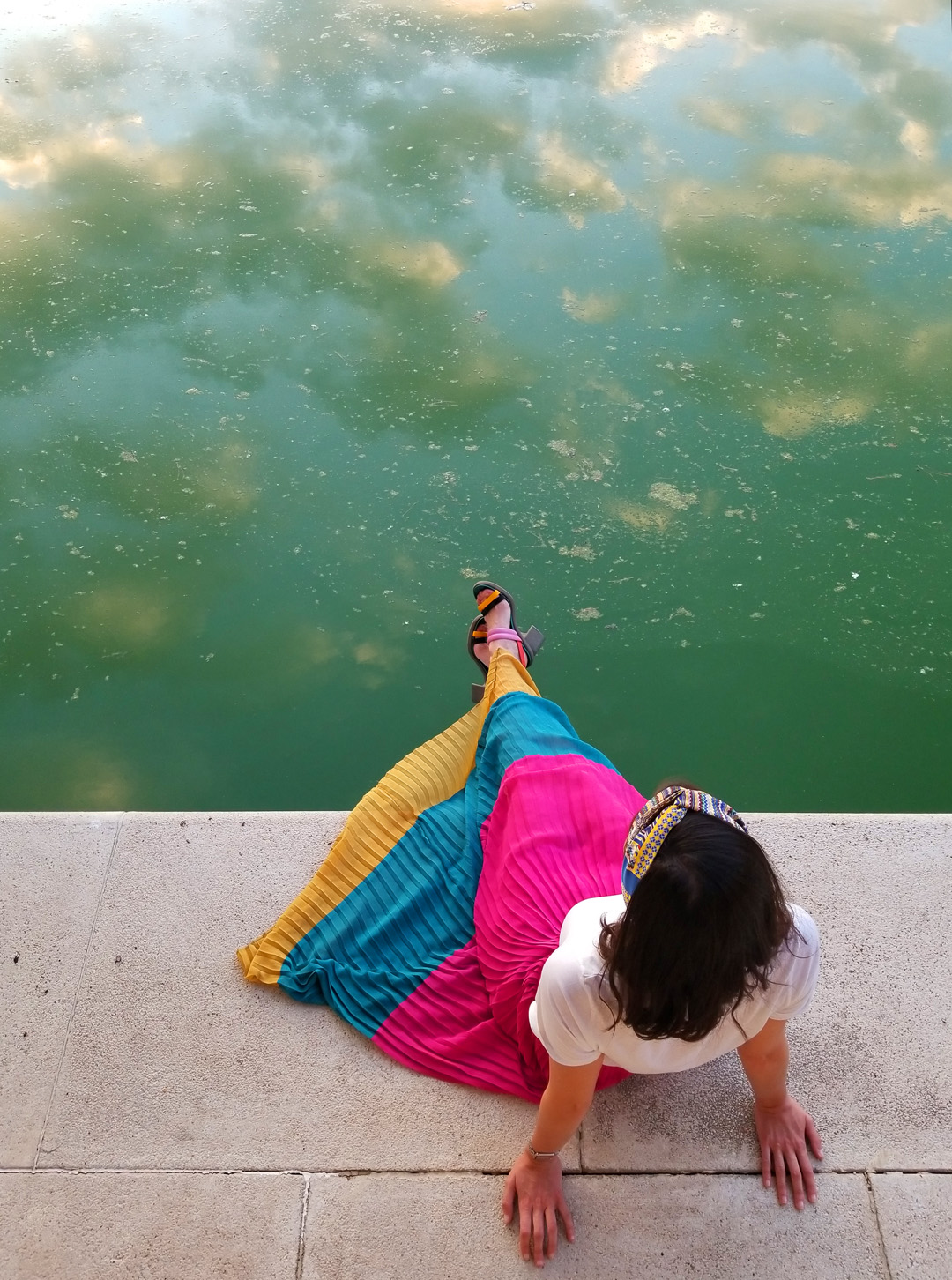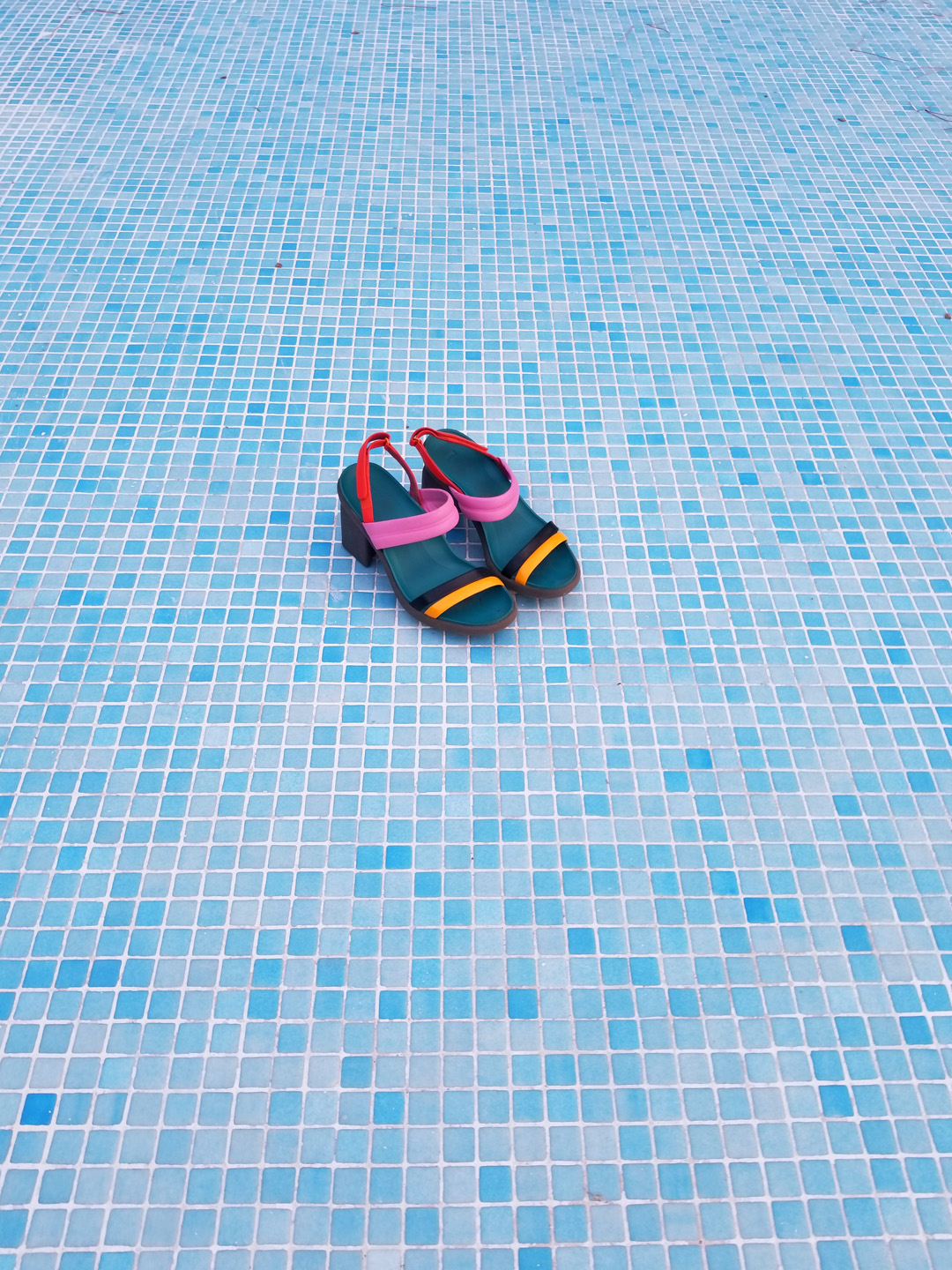Pleats are an intrinsic part of fashion and I find their story fascinating! Pleated fabrics go back as far as the ancient Egyptian civilization, were the Pharaohs and aristocracy used to wear them as a symbol of power and wealth. Pleating was done by hand and a mixed egg was placed over the linen fabric to preserve the pleat. But when the fabrics were washed the pleats will vanish and the process will start all over again, making the pleated garments a very luxurious product. Another great ancient civilization that made the pleated garments part of their identity were the Greeks. We all have in mind the gorgeous Greek caryatids wearing their beautiful pleated tunics or peplum.
The luxury of wearing pleated clothes and accessories passed from one civilization to another for many centuries, including the pleated ruffs worn during the Renaissance or the beautiful pleats of the Indian sarees. Until we arrive to the beginning of the 20th century and Mariano Fortuny started his studies on pleating. Since all the fabrics available were natural, such as linen, silk or cotton, (remember that synthesis fabrics were not available until the second half of the 20th century, as you can read here) the pleats vanish with the water, a great disadvantage taking into consideration the labour-intensive requirements. The silver lining is that Fortuny developed a new technique in which the pleats will remain in the garment regardless of the water applied during the washing. Thanks to this development, Fortuny’s carrier was full of success and is still considered one of the biggest designers in fashion history! His formula remained secret and even nowadays is still a mystery how Fortuny created permanent pleats in natural fabrics.
Delphos dress by Mariano Fortuny
During the 20th century there has been lots of development regarding the pleating techniques and the most simple and commercial pleats are done by machine. The complex ones, are still handmade by pleat artisans. The process is beautiful and time-consuming, a special type of paper is used to create the pattern, once the paper sheet is done, it requires a replica and finally, the fabric is placed between both papers and the whole piece get steamed until the pleat design is transferred into the fabric. I have seen it several times and it feels like magic!! Nowadays, just couture clothing is made using the traditional handmade technique.
After Fortuny’s work, the Japanese designer Issey Miyake has found endless inspiration in the pleating techniques. His geometric style has taken pleats to the next level, creating surprising 3D shapes, and he even plays with the movement created through the pleated shapes. His work, it’s being worldwide recognise and several books and a Tokyo solo exhibition are a great sample of it!
Issey Miyake’s work
In today’s outfit I feature a gorgeous pleated skirt that I got many years ago. I also wear it sometimes as a midi version, as you can see here! Hope you like it and enjoy the interesting evolution of the pleats in fashion history! For me, knowing the effort and development behind every single piece in our wardrobe is enough to appreciate my clothes and stop extreme fast-fashion consumerism.
Pleating by Maison Lognon in France
T-shirt – Everlane #LocallyProduced #PimaCotton #TransparentSupplyChain
Skirt – Muestrarios #SmallLocalBusiness
Sandals – Camper
Scarf – Muestrarios #Borrowed #SmallLocalBusiness

